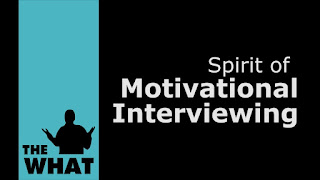This is the first in a series on using principles from social psychology and behavioral economics as tools in AOD prevention; the first being the "FOOT IN THE DOOR" principle. The material I cite comes directly from the blog.enhancv.com blog, however, the specific examples related to addressing higher-risk collegiate drinking...and/or other risky behaviors...are original:
Principle: The foot in the door principle means that prior to asking for a big favor, you should ask for a smaller one. By first asking for something small, you’re making the individual “committed” to helping you, and the larger request acts as a continuation of something technically already agreed upon (2018, https://blog.enhancv.com).
Real-life Application:
- A tourist asks you for directions. As a follow-up, they say they might get lost and ask you to walk them there. You’re more likely to agree to that, than if they straight-off asked the second question.
- You missed a class and asked your classmate for their notes. Subsequently, you admit to having been a tad irresponsible this semester and ask for the notes for the entire semester. By first asking for the small favor, you increase your chances of getting the big one – namely, a free-ride on your classmate’s notes.
- You just failed an important midterm and the professor doesn’t offer retakes. You decide to ask for feedback on your work and why you failed, followed by a request for a retake. You’re more likely to succeed in such a scenario, as opposed to directly asking for a retake (2018, https://blog.enhancv.com).
Case Study:
In the year 1966, two Stanford researchers – Jonathan Freedman and Scott Fraser – decided to test the effectiveness of FITD as a persuasion technique. They divided 156 women into four groups. They called the first three groups, asking a few simple questions about their household kitchen products.
Three days later, they asked to personally go through their kitchen cabinet and catalog their products. The other group was only approached with the second request. The first three groups had a 52.8% compliance rate, while the last group had only 22.2% (2018, https://blog.enhancv.com)
Read more on the technique here.
REGARDING COLLEGIATE DRINKING or other substance use
Example #1: During a visit to the health center, a student is asked to complete a routine health survey. Upon completing the survey, the student is then asked to maintain a weekly alcohol-use log...or smoking log, "study drug" use, etc.
Example #2: A counselor asks a student to commit to a 2-session assessment to comply with judicially mandated "alcohol counseling"; upon completing, the counselor requests that they continue their meetings to explore ways of cutting back frequency or quantity.
Example #3: An athletic trainer asks a student-athlete to count the number of drinks consumed in a week to determine the calories consumed. Following the collection of these data, the trainer asks if the student would agree to meet with someone to discuss ways to reduce calorie intake while at the same time improving the quality of sleep by reducing alcohol consumption.
What do you think?
What do you think?
Next time, the Door in the Face principle.
Dr. Robert
Dr. Robert




